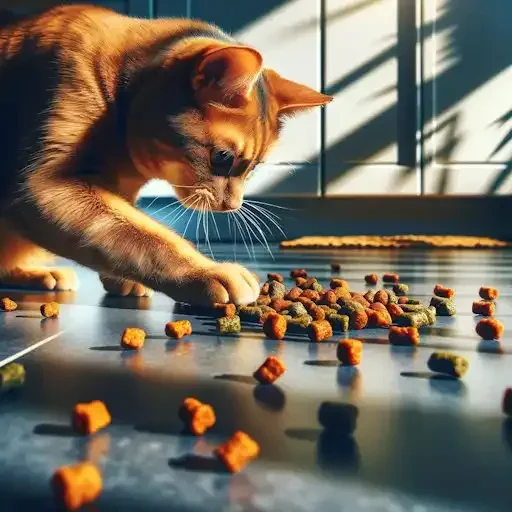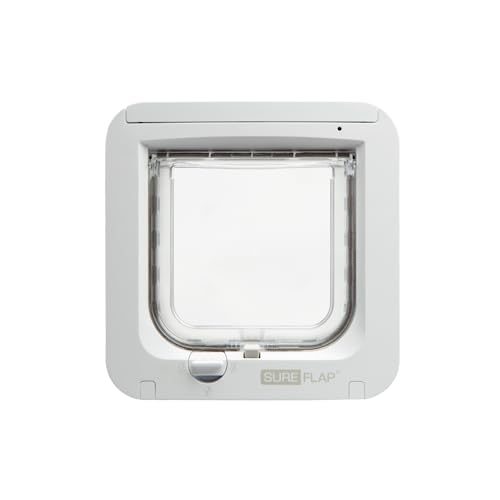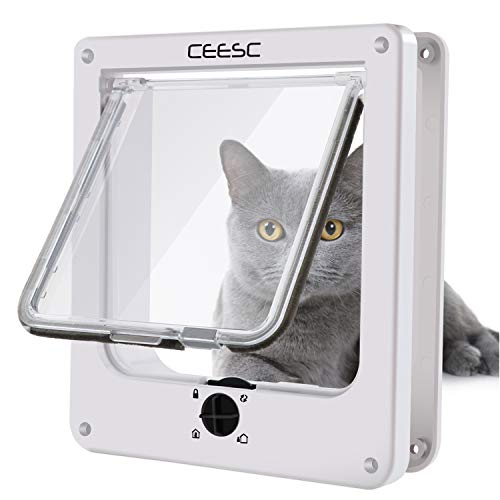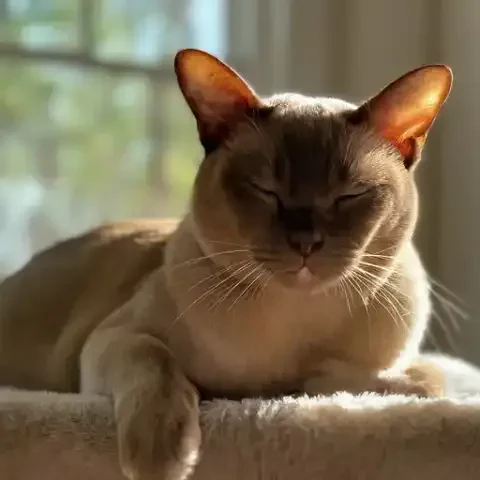Ever wonder what your cat is really thinking when they slowly blink at you from across the room? Or why they twitch their tail in seemingly opposite ways, one moment gently swaying and the next thumping agitatedly against the floor? Cats, those enigmatic and graceful creatures we share our lives with, often seem to operate on a wavelength we can't quite grasp. While they certainly communicate through meows, purrs, and hisses, a vast and often more nuanced part of their language is spoken in silence, through the subtle yet expressive movements of their bodies. Cats are masters of nonverbal communication. Unlike dogs, who often wear their hearts on their sleeves (or rather, wagging tails), cats tend to communicate in a more understated, sophisticated manner. Their body language is a rich tapestry of postures, gestures, and expressions, a silent symphony of communication that reveals their emotions, intentions, and needs if we only learn how to listen with our eyes.
Understanding feline body language is not just a fascinating intellectual exercise; it's a key that unlocks a deeper, more meaningful relationship with your cat. By learning to decode their silent signals, we can forge a stronger bond built on mutual understanding and respect. When we speak "cat," we are better equipped to meet their needs effectively. We can discern when they are feeling stressed, fearful, happy, playful, or unwell, allowing us to respond appropriately and provide the comfort, reassurance, or space they require. Decoding feline body language is also essential for preventing misunderstandings that can inadvertently cause stress or even conflict. A misinterpreted stare, a wrongly timed approach, a misunderstood tail twitch – these small missteps can sometimes lead to feline anxiety or unwanted defensive behaviors. Ultimately, mastering the art of reading cat body language elevates the entire cat-human relationship. It transforms us from well-meaning but sometimes clueless humans into truly attuned companions, capable of understanding, responding to, and deeply appreciating the complex and beautiful communication of our feline friends. In this article, we will embark on a journey to unlock the secrets of feline body language, exploring the expressive world of their ears, eyes, tails, posture, and more. Let's begin with those remarkably mobile and sensitive indicators of feline feeling – the ears.
Think of your cat's ears as highly sophisticated antennas, constantly swiveling and rotating to gather information about their environment, but also serving as wonderfully expressive indicators of their emotional state. The position of a cat's ears is a surprisingly telling barometer of their mood and focus of attention. When a cat's ears are positioned forward and slightly tilted forward, it generally signals a state of alertness and interest. This ear position speaks of a cat that is attentive to their surroundings, curious about something that has caught their notice, or simply relaxed and friendly, open to interaction. It's the ear position of a cat that is calmly observing their domain, perhaps watching birds outside the window or listening to the gentle sounds of their home. If you observe your cat with ears turned slightly to the side or back, it often indicates a state of relaxation. They might be calmly listening to sounds behind them, or it could suggest they are starting to feel a little unsure or nervous about something in their periphery, still assessing the situation without alarm. This is a more passive listening position.
Ears flattened to the sides, often described as "airplane ears" due to their resemblance to aircraft wings, are a significant red flag. This ear posture is a clear indicator of negative emotions. Flattened ears signal fear, anxiety, stress, or defensiveness. A cat with airplane ears is feeling threatened and is likely in a state of distress, preparing to defend themselves if necessary. This ear position is a strong warning sign, suggesting you should give the cat space and try to identify and remove the source of their distress. In contrast to flattened ears, constantly swiveling and rotating ears indicate a cat that is intensely engaged with their auditory environment. Ears actively moving in different directions signal a cat that is listening intently to a variety of sounds, scanning their surroundings for any auditory cues. They are actively gathering information, pinpointing sound sources, and staying acutely aware of what's happening around them. Finally, ears held upright and relaxed are a wonderful sign of feline contentment and happiness. This ear position reflects a cat that is feeling secure, comfortable, and at peace with their environment. It's the ear posture of a truly happy kitty, relaxed and enjoying their surroundings.
It's crucial to remember that ear position, like any element of cat body language, should always be interpreted within context. Consider the overall situation, the cat's other body language cues, and the environment when deciphering ear signals. For example, flattened ears accompanied by hissing and an arched back clearly signal fear and aggression, a very different message than flattened ears observed when a cat is simply grooming themselves or resting in a tightly curled position. Quick tip: Forward ears = interested and friendly. Flattened ears = fearful and stressed. Upright, relaxed ears = happy and content. Now, let's move on to another incredibly expressive feature of feline communication – the eyes.
They say the eyes are the windows to the soul, and in the case of cats, this adage holds particularly true. A cat's eyes are remarkably powerful communicators, conveying a wealth of information about their emotional state and intentions through subtle shifts in pupil size, gaze direction, and even the pace of their blinks. Pupil dilation, or large pupils, can be triggered by a variety of emotions and external factors. In dim light conditions, pupils naturally dilate to allow more light to enter the eye, improving vision. However, large pupils in normal lighting can also indicate excitement, playfulness, fear, or anxiety. Context is key to differentiating between these emotional states. Pupil dilation associated with excitement or playfulness is often accompanied by other playful body language cues like an upright tail, forward ears, and a playful stance. Pupil dilation linked to fear or anxiety is more likely to be paired with flattened ears, a tense posture, and perhaps a tucked tail.
Pupil constriction, or slit-like pupils, also has multiple potential meanings. In bright light, pupils constrict to limit light entry and protect the sensitive retina. However, constricted pupils can also signal a cat that is feeling threatened, aggressive, or intensely focused, particularly when hunting. Again, context is essential. Constricted pupils in bright sunlight are simply a physiological response to light. Constricted pupils accompanied by a direct stare, tense body posture, and perhaps a low growl, however, signal a cat that is feeling confrontational or preparing to be aggressive. The slow blink, often referred to as a "cat kiss," is one of the most endearing and affectionate eye signals in the feline repertoire. A slow blink is a clear sign of contentment, trust, affection, and relaxation. When a cat slow blinks at you, they are essentially saying, "I trust you, I am comfortable with you, and I feel safe in your presence." It's a gesture of profound affection in the cat world. Try reciprocating a slow blink back to your cat – it's a wonderful way to communicate affection in their own language and deepen your bond.
In stark contrast to the gentle slow blink, a direct, unblinking stare can be perceived as quite confrontational in cat communication. An unblinking stare is often interpreted as a challenge, a display of dominance, aggression, or a signal that the cat is feeling threatened and territorial. Direct eye contact can be perceived as intimidating in the feline world. Avoid staring directly at a cat you don't know well or one that seems anxious. Instead, approach cats with a softer, indirect gaze or by blinking slowly to signal non-threatening intentions. A soft gaze or half-closed eyes are indicators of relaxation and contentment. Cats often adopt this eye posture when they are feeling peaceful, safe, and comfortable, perhaps while lounging in a sunbeam or being gently petted. It's a sign of feline bliss and tranquility. Wide open, alert eyes signal curiosity and interest. A cat with wide open eyes is paying attention to something that has piqued their interest, intently observing their surroundings or focusing on a particular object or movement.
Remember, interpreting eye signals, like all aspects of cat body language, is best done in combination with other cues. A slow blink accompanied by a relaxed posture and a gentle purr strongly reinforces a message of contentment and affection. Quick tip: Dilated pupils (context dependent) = excitement, fear, playfulness. Constricted pupils (context dependent) = bright light, aggression, focus. Slow blink = affection. Direct stare = challenge. Soft gaze = relaxation. Now, let's turn our attention to another incredibly expressive part of the feline anatomy – the tail.
The tail, often likened to a "feline flag," is a remarkably dynamic and versatile communication tool for cats. It's a visual semaphore, capable of conveying a wide range of emotions and intentions through its position, movement, and even the subtle nuances of its tip. A tail held high and upright, often with a slight curve at the very tip, is generally a sign of happiness, confidence, and friendliness. This tail posture indicates a cat that is feeling pleased, approachable, and is often used as a greeting signal when approaching familiar humans or other friendly cats. The slight curve at the tip, sometimes described as a "question mark tail," often amplifies the friendly, approachable aspect of this signal. In contrast to a happy upright tail, a tail held straight upright but puffed up, with the fur standing on end (piloerection), signals a very different emotion: fear and aggression. This puffed-up tail posture is a clear sign of a cat feeling threatened and defensive. They are trying to appear larger and more intimidating to ward off perceived danger. It’s important to distinguish this puffed-up upright tail from the happy upright tail, which is smooth furred and often has a gentle curve.
A tail held low to the ground or tucked tightly between the legs is a clear indicator of fear, anxiety, and submissiveness. This tail position reflects a cat that is feeling insecure, threatened, and is attempting to make themselves small and inconspicuous, often preparing to flee or avoid confrontation. Tail swishing or wagging from side to side, particularly when rapid and jerky, is generally not a sign of happiness in cats, unlike in dogs. Instead, a cat’s tail swishing or wagging quickly and angrily signals agitation, irritation, annoyance, or even anger. It's a clear "leave me alone!" signal, indicating that the cat is feeling frustrated or overstimulated. Gentle tail swaying or slow swishing, however, often indicates focused attention and mild interest. A tail swaying slowly and relaxedly can be observed when a cat is concentrating, thinking, or focused on something, perhaps watching prey or contemplating their next move. It can also sometimes precede playful anticipation, like the tail sway before a pounce. Tail twitching or thumping on the ground can be a bit more complex and context-dependent. It can indicate excitement, particularly in anticipation of play or food. However, it can also signal irritation, frustration, or even a state of internal conflict, where a cat wants to approach something but is also feeling hesitant or unsure. Context and other body language cues are crucial for deciphering the precise meaning of tail twitching or thumping. Finally, a tail wrapped gently around you, or another cat, is a clear gesture of affection, comfort, bonding, and trust. This tail position signals closeness, security, and a strong social bond.
Even subtle nuances in tail movement, particularly at the tail tip, can add layers of meaning to feline tail communication. A slight twitch at the very tip of an upright, happy tail can amplify the message of contentment and indicate extra happiness or excitement. Quick tip: Upright tail = happy, confident. Puffed upright tail = fear, aggression. Low/tucked tail = fear, anxiety. Fast swish = irritation, anger. Slow sway = focused attention. Twitching/thumping = excitement OR frustration (context needed). Wrapped tail = affection, bonding. Now, let’s move on to understanding how overall body posture contributes to the feline communication picture.
While ears, eyes, and tails offer specific clues, the overall body posture of a cat provides a broader, more encompassing message about their emotional state and intentions. Posture is like the overarching theme of their body language, giving you a general impression of how they are feeling and what they are communicating at a fundamental level. A relaxed posture is characterized by a cat lounging comfortably, perhaps curled up in a loaf position, stretched out sideways, or loosely draped in a "loafing" position with paws tucked under. This posture indicates a cat that is content, comfortable, and secure, feeling safe in their environment. Their muscles appear relaxed, and they often exhibit other relaxed body language cues like slow blinks and a soft gaze. In contrast, a tense posture is easily recognizable. A cat exhibiting a tense posture will often crouch low to the ground, appearing stiff, hunkered down, and with muscles taut. This posture signals fear, anxiety, insecurity, and a feeling of being threatened. They are trying to make themselves as small and inconspicuous as possible, often preparing to flee or defend themselves.
A cat stretching out fully, often rolling onto their back and exposing their vulnerable belly, is displaying the ultimate posture of comfort, trust, and security. Exposing their belly is a sign of complete vulnerability in the animal kingdom. When a cat rolls onto their back in your presence, it's a high compliment, indicating they feel exceptionally safe, secure, and relaxed in your company. They are often feeling playful in this posture as well, though it's important to remember that belly exposure is not always an invitation for belly rubs – many cats dislike belly rubs, even when feeling relaxed. An arched back, particularly when accompanied by piloerection (fur standing on end, especially along the spine and tail), is a classic "Halloween cat pose." This posture, however, signals fearful aggression and defensiveness, not playful stretching. A cat with an arched back and puffed fur is feeling very threatened and is attempting to appear larger and more intimidating to ward off danger. They are poised to fight if necessary. Distinguish this defensive arched back from a playful stretching arch, which is typically less extreme, without piloerection, and often followed by a relaxed posture.
A playful posture is easily identified by the "play bow." This posture involves the cat lowering their front body to the ground while keeping their rear end raised in the air. It's a clear invitation to play, signaling that the cat is feeling playful, energetic, and ready to engage in some fun. Play bows are often accompanied by other playful cues like dilated pupils and tail twitches. A cat standing tall, upright, and leaning slightly forward projects an aura of confidence, assertiveness, and dominance. This posture indicates a cat that is feeling bold, in control, curious, and is often observed when they are exploring their environment, investigating something new, or asserting their presence. Remember, posture is most informative when considered in combination with other body language cues. A tense posture combined with flattened ears, dilated pupils, and a tucked tail paints a clear picture of a cat experiencing high anxiety and fear. Quick tip: Relaxed posture = content, comfortable. Tense posture = fearful, anxious. Belly exposure = extreme trust, comfort. Arched back (puffed fur) = fearful aggression. Play bow = playful invitation. Upright, leaning forward posture = confident, assertive. Let's now briefly consider whiskers, another subtle yet communicative feline feature.
While often thought of primarily as sensory tools for navigating tight spaces, whiskers also contribute to feline communication, subtly expressing mood through their position. Relaxed whiskers, positioned forward but gently relaxed and slightly curved forward, indicate a cat that is content, relaxed, and friendly. This whisker position suggests a calm and comfortable state of mind, a cat that is feeling approachable and at ease. Forward whiskers, pointing straight forward, stiff and alert, signal a cat that is alert, interested, and curious. This whisker position reflects focused attention, a cat that is actively investigating something that has captured their interest and is paying close attention to their surroundings.
Pulled-back whiskers, flattened tightly against the face, indicate fear, anxiety, stress, and nervousness. This whisker posture signals a cat that is feeling threatened and insecure, attempting to make themselves appear smaller and less threatening, and is trying to avoid conflict. Pushed-forward and stiff whiskers, appearing puffed out and spreading wide, are a warning sign of aggression, anger, and irritation. This whisker position reflects a cat that is feeling threatened, territorial, and defensive. It's a warning signal, indicating they are prepared to attack if necessary, displaying defensive aggression. While whiskers are indeed crucial for sensing spatial dimensions and navigating tight spaces, their contribution to emotional communication should not be overlooked. Quick tip: Relaxed whiskers = content, relaxed. Forward whiskers = alert, curious. Pulled back whiskers = fearful, anxious. Pushed forward whiskers = aggressive, angry.
It’s crucial to remember that body language cues, while informative, are not absolute guarantees of a cat's emotional state. Context is absolutely king in accurately decoding feline communication. No single body language cue should be interpreted in isolation. Always consider the broader context of the situation, the surrounding environment, and the cat's recent experiences when interpreting their body language. Factors to consider include the current environment. Is the cat in a familiar and comfortable place, or are they in a new or potentially stressful environment, such as a veterinary clinic or a new home? The presence of other animals or unfamiliar people can also significantly influence a cat's body language. Consider recent events. Has there been a sudden loud noise, a vet visit, the introduction of a new pet, or any other change in routine that might be affecting the cat's emotional state? Your own actions also play a role. Are you approaching the cat directly, making direct eye contact, reaching out to pet them, or engaging in any other behavior that might be perceived as threatening or unwelcome? Also consider the time of day and typical cat behavior. Is it naptime, playtime, feeding time, or another point in their daily routine? Understanding the typical behavior patterns associated with different times of day can help contextualize their body language.
Let's consider a few example scenarios to illustrate how to combine body language cues with context for more accurate interpretations. Scenario one: A cat hissing, with flattened ears, and an arched back in a new veterinary examination room. Interpretation: This cat is most likely experiencing fear and defensive aggression due to the unfamiliar and potentially stressful veterinary environment. Scenario two: A cat hissing, with flattened ears, and swatting a paw during playtime with another cat in their household. Interpretation: This cat is likely expressing annoyance or overstimulation during play, indicating they need a break or are feeling overwhelmed by the interaction. Practice is key to becoming fluent in feline body language. Actively observe your own cat in various situations. Pay attention to their ears, eyes, tail, posture, and whiskers, and consider the context of their environment and recent experiences. The more you practice, the better you will become at accurately decoding their silent language.
Body language and vocalizations often work in tandem, creating a combined message for more complete feline communication. Cats frequently use both body language and vocalizations to express their full range of emotions and intentions. For example, a purring cat with a relaxed posture and slow blinks is sending a powerful and unambiguous message of contentment and deep affection. The combination of these visual and auditory cues leaves little room for misinterpretation – they are blissfully happy and comfortable. Conversely, a cat hissing, with flattened ears, and an arched back is sending a very clear and combined signal of fear and aggression. The vocalization reinforces the body language, leaving no doubt about their negative emotional state and defensive intentions. A cat meowing while rubbing against your legs and holding their tail upright is combining vocal and visual signals to convey a greeting and seek attention. The meow is often a friendly vocalization directed at humans, while the rubbing and upright tail further emphasize their friendly and attention-seeking intentions. Pay attention to both visual and auditory cues when interacting with your cat. Listening to their vocalizations – purrs, meows, hisses, growls – in conjunction with carefully observing their body language provides a much richer and more complete understanding of their communication. While the focus of this article is on body language, it's worth briefly acknowledging that scent marking, through rubbing, scratching, and spraying, is yet another significant form of feline communication, though less directly "visible" in the way body language is.
Despite our best efforts to understand, common misinterpretations of cat body language can occur. It's important to be aware of some common myths and misunderstandings to avoid misreading your cat's signals. One common misconception is that purring always means a cat is happy. While purring is often associated with contentment, cats also purr when they are in pain, stressed, or self-soothing. Purring can be a complex vocalization with multiple meanings. Context and other body language cues are essential for accurately interpreting purring. Another common misinterpretation is equating tail wagging in cats to tail wagging in dogs. While dogs wag their tails primarily to express happiness and excitement, tail wagging in cats often indicates irritation, agitation, or conflict, not happiness. A cat's tail wag is a very different signal than a dog's tail wag. Many people also mistakenly believe that when a cat exposes their belly, it's always an invitation for a belly rub. While belly exposure is a sign of deep trust and relaxation, not all cats enjoy belly rubs. For some cats, it can be overstimulating or feel vulnerable, and they may react defensively, even if they initially rolled onto their back in a relaxed state. Hissing is sometimes misinterpreted as "just being mean" or aggressive for no reason. Hissing is actually a communication of fear, threat, or discomfort, not maliciousness. A hissing cat is feeling threatened and is communicating a clear warning to back off. To promote accurate interpretation, always strive to look at the whole picture of a cat's body language. Avoid focusing solely on one cue in isolation. Consider the combination of ear position, eye signals, tail movements, posture, and whiskers, and always factor in the context of the situation to arrive at a more accurate understanding of what your cat is trying to communicate.
Becoming a cat body language expert offers profound advantages, enriching your relationship with your feline companion immeasurably. The benefits are numerous and far-reaching. Understanding cat body language strengthens the bond you share with your cat. It fosters deeper communication, mutual respect, and a more attuned connection. It empowers you to provide better care for your cat, allowing you to accurately interpret their needs, recognize signs of stress or illness early, and respond in ways that promote their well-being and comfort. Mastering feline body language helps reduce stress for both you and your cat. By avoiding misinterpretations and responding appropriately to their signals, you create a more harmonious and predictable environment, minimizing feline anxiety and strengthening their sense of security. Understanding cat body language can also help prevent potential aggression. By recognizing early warning signs of feline discomfort or fear, you can intervene before situations escalate into unwanted defensive behaviors, creating a safer and more peaceful home for everyone. Ultimately, becoming fluent in feline body language leads to a happier cat. By truly understanding their needs, emotions, and communication style, you can create a living environment and relationship that caters to their feline nature, maximizing their happiness and overall quality of life. And of course, a deeper understanding of your cat makes cat ownership even more enjoyable for you. The more you understand your cat, the richer and more rewarding your interactions will be. You'll develop a deeper appreciation for their complex communication system and the unique bond you share.
Decoding feline body language is an ongoing journey of observation, learning, and refinement. It’s not about becoming fluent overnight, but about cultivating a new awareness and perspective in your interactions with your cat. Remember the key takeaways: pay attention to their ears – antennas of emotion; read their eyes – windows to their soul; observe their tail – the feline flag; consider their posture – the overall message; and note their whiskers – subtle mood indicators. Always, always remember that context is king. No body language cue exists in isolation. Continue to observe your own cat in different situations, practicing your newfound knowledge and honing your feline decoding skills. The more you observe and learn, the more fluent you will become in "cat," opening up a whole new dimension of communication and understanding with your feline friend. By embarking on this rewarding journey of understanding your cat's silent language, you will not only strengthen your bond but also unlock a deeper appreciation for the intricate and beautiful world of feline communication. Start observing your cat today with a new perspective. Pay attention to their subtle cues, consider the context, and embark on the rewarding journey of understanding your feline friend's silent language. You'll be amazed at what you discover, and your relationship with your cat will be enriched in countless, purrfect ways.







